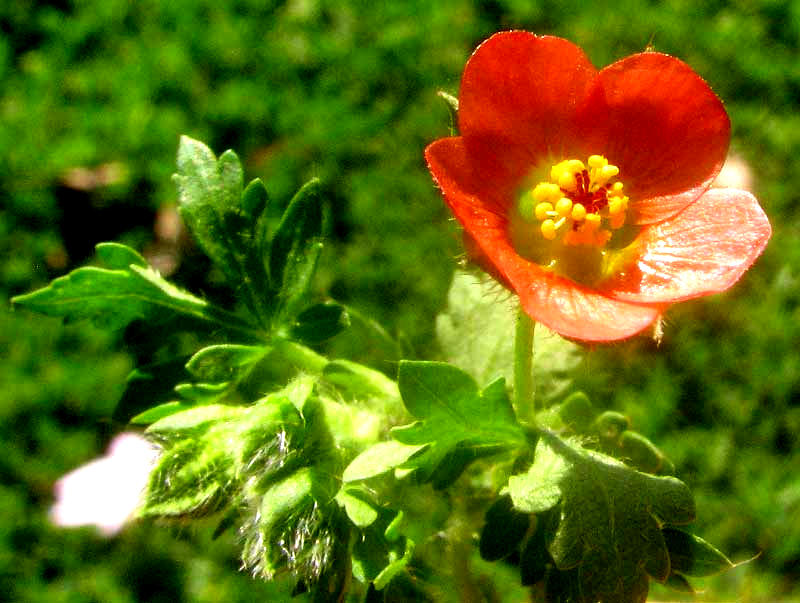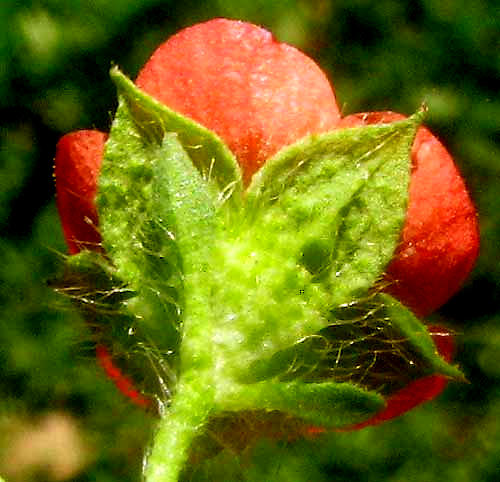Excerpts from Jim Conrad's
Naturalist Newsletter

from the April 6, 2014 Newsletter issued from the Frio Canyon Nature Education Center in the valley of the Dry Frio River in northern Uvalde County, southwestern Texas, on the southern border of the Edwards Plateau; elevation ~1750m (~5750 ft); N29.62°, W99.86°; USA
BRISTLEMALLOW
In Uvalde's pleasant Memorial Park, down in the grass next to a duck pond, so small and low-growing that mowers have passed right over it, a certain plant bore a bright, red-orange flower with a yellow center, the whole blossom only about the size of a mouse's eye. On hands and knees and squinting into the grass, it was clear that this little plant was worth knowing. That's it above.
Seeing how the flower's numerous stamens created a kind of bouquet with the yellow anthers' dark red filaments joined at their bases forming a cylinder around the pistil's style, already it was clear that this was a member of the big Hibiscus Family, the Malvaceae. A look at the back of the little flower is seen below:

That picture shows that the five hairy calyx lobes unite at their bases into a kind of bowl, and that below the calyx there are leaf-like "bracts." These details help in the identification of the species.
This is such a pretty, common and distinctive little plant that identifying it wasn't hard, despite not having fruits, which often are needed when figuring out the name of Hibiscus Family species.
In the US our plant is mostly known as the Carolina Bristlemallow, though as a "weed" occurring in much of the world it goes by many names. It's MODIOLA CAROLINIANA, and it's such a distinctive plant that it's the only species in the genus Modiola. It's thought to be native to tropical America, from northern Argentina north to the warmer parts of eastern North America, and if that's right, then it's at home here, even in mowed grass next to a park's duck pond.
One reason it's so weedy in so many places is that it's a tough little plant, tolerant of both salt and drought. There are reports of livestock being poisoned eating its herbage. However, in Daniel Austin's "Florida Ethnobotany," it's reported that Carolina Bristlemallow has been used as a gargle for sore throats, tonsillitis and diphtheria; as an emollient and sedative, and to treat edema.